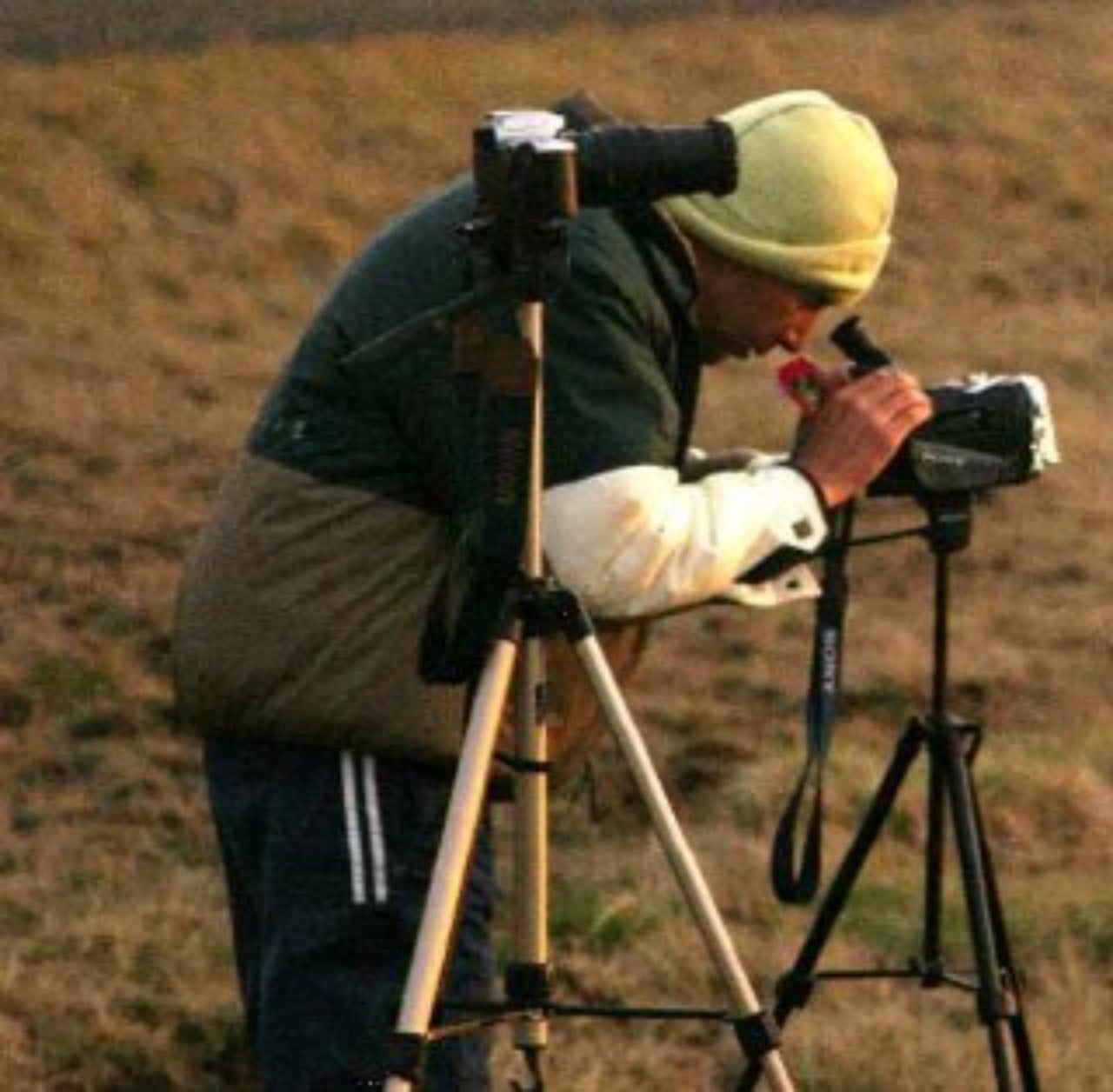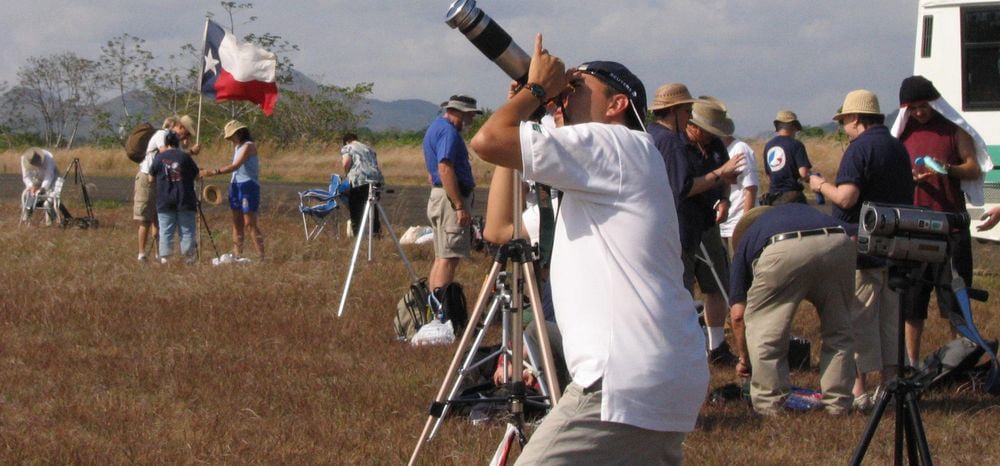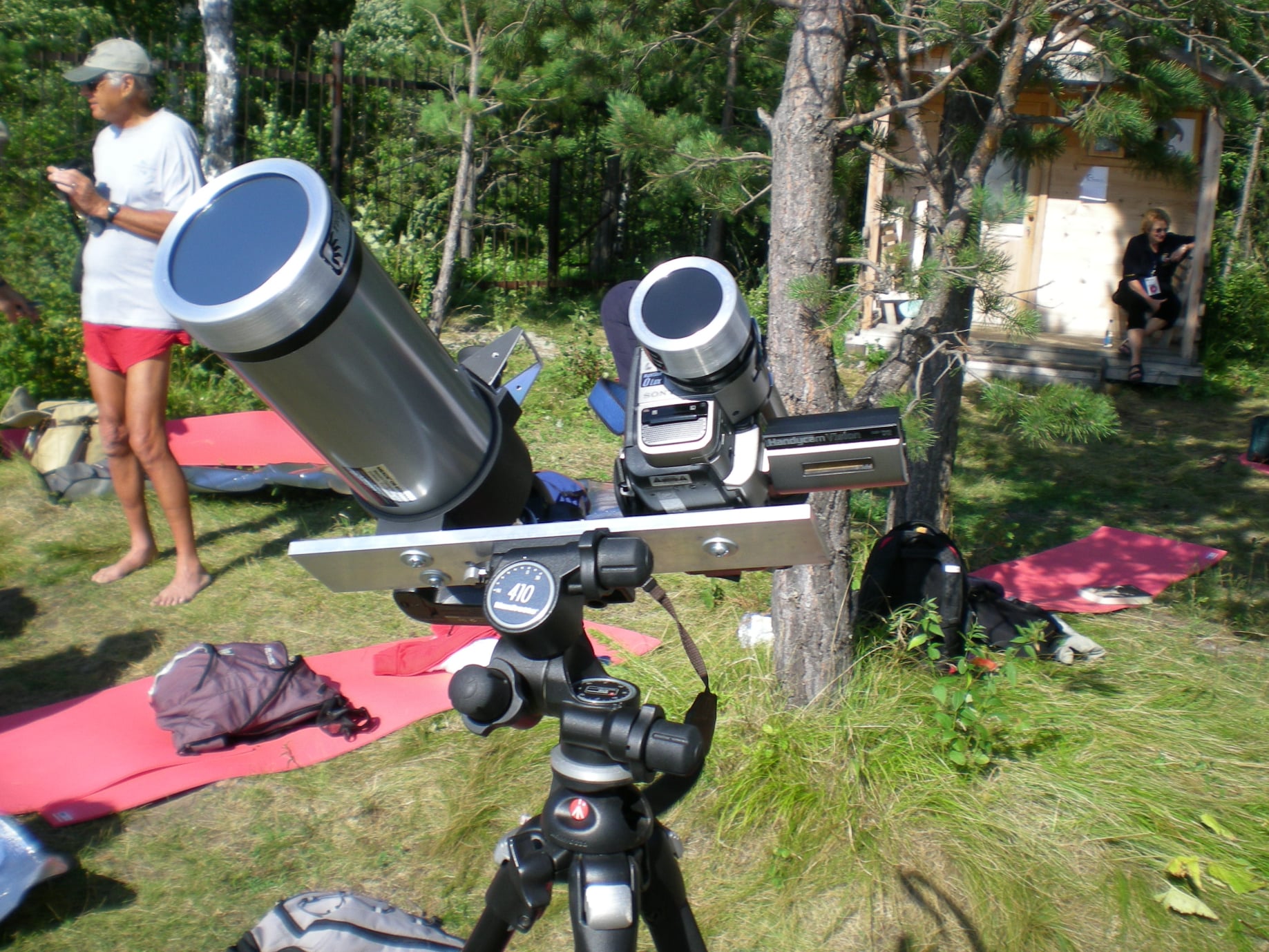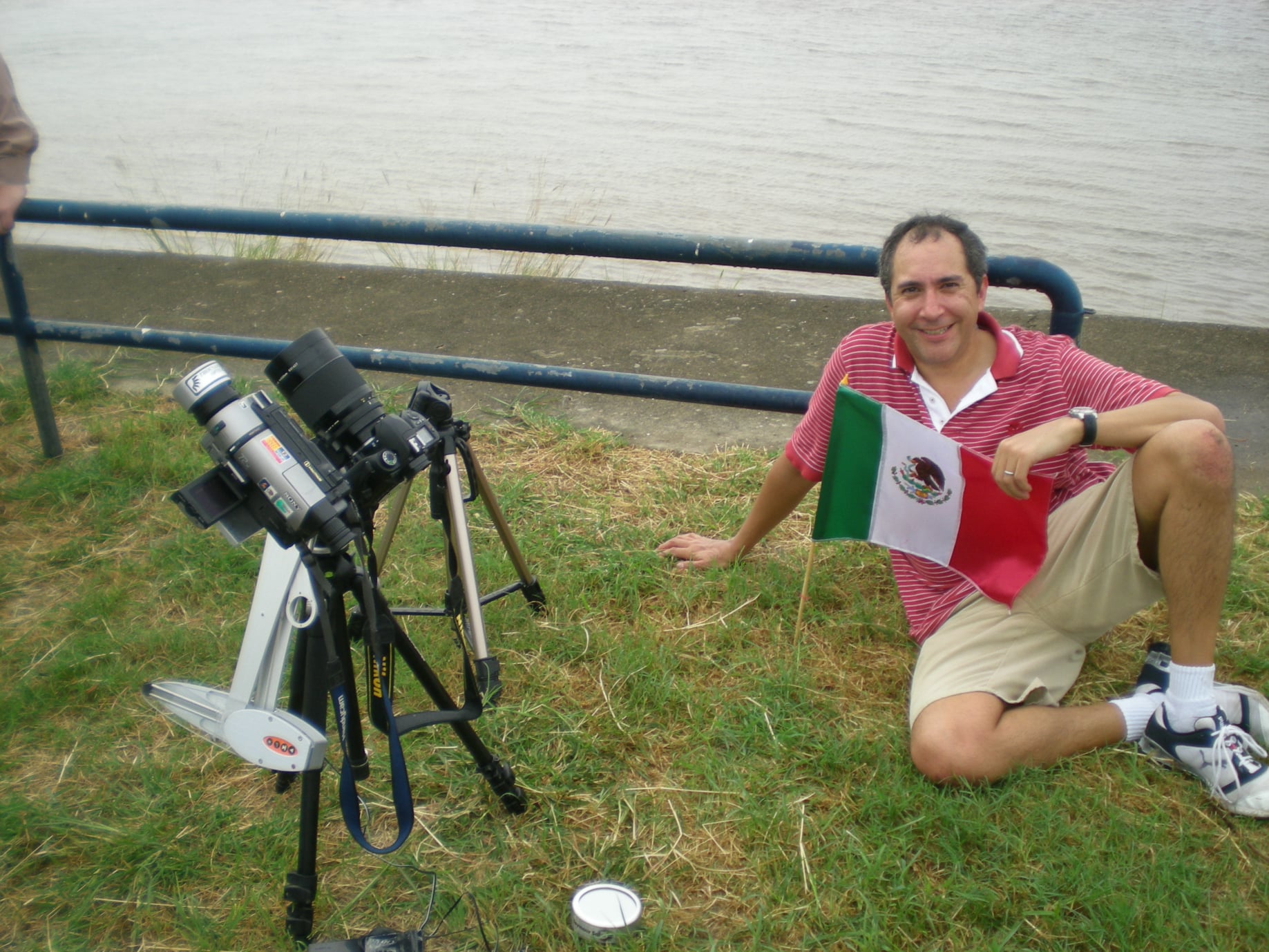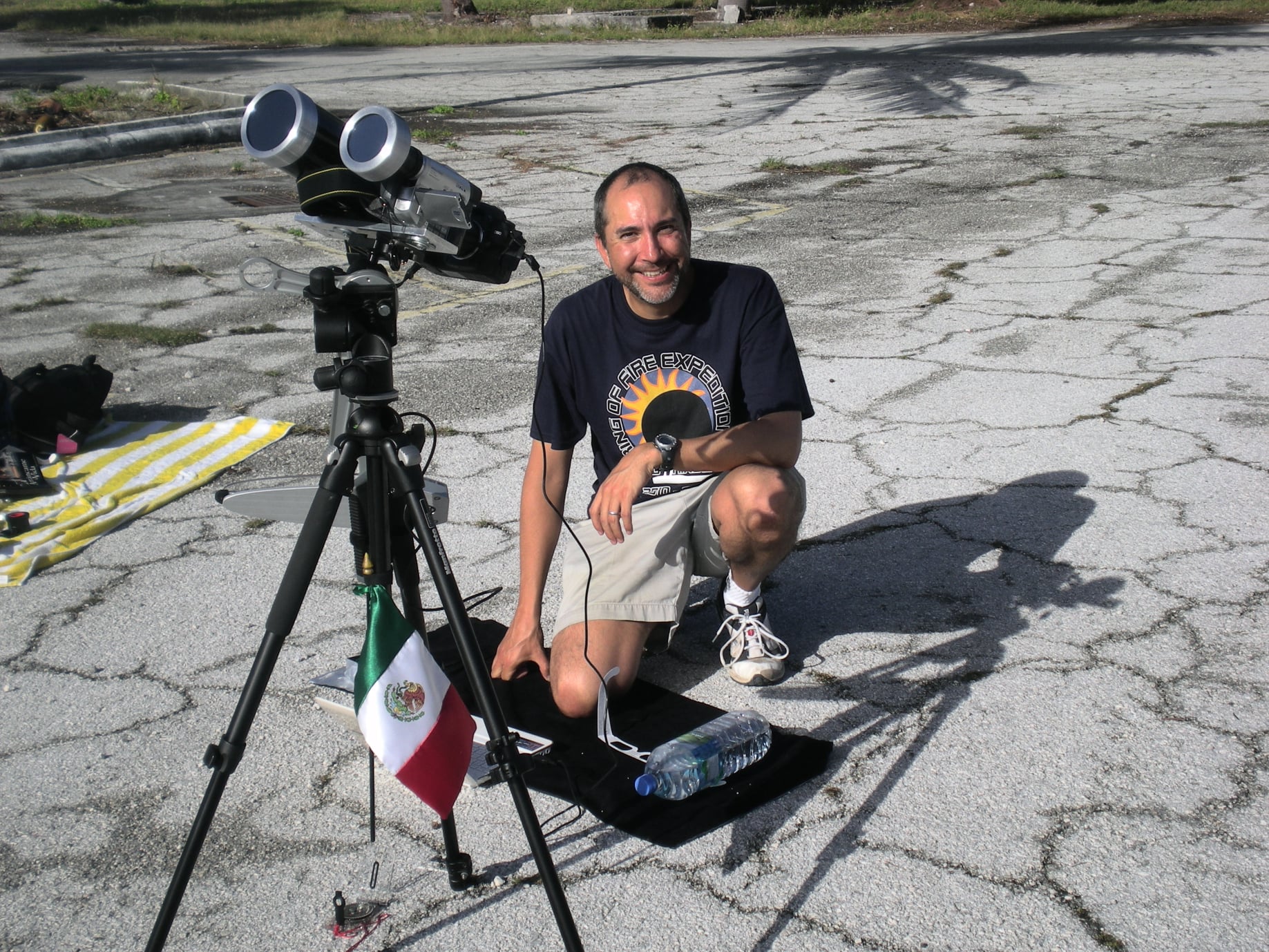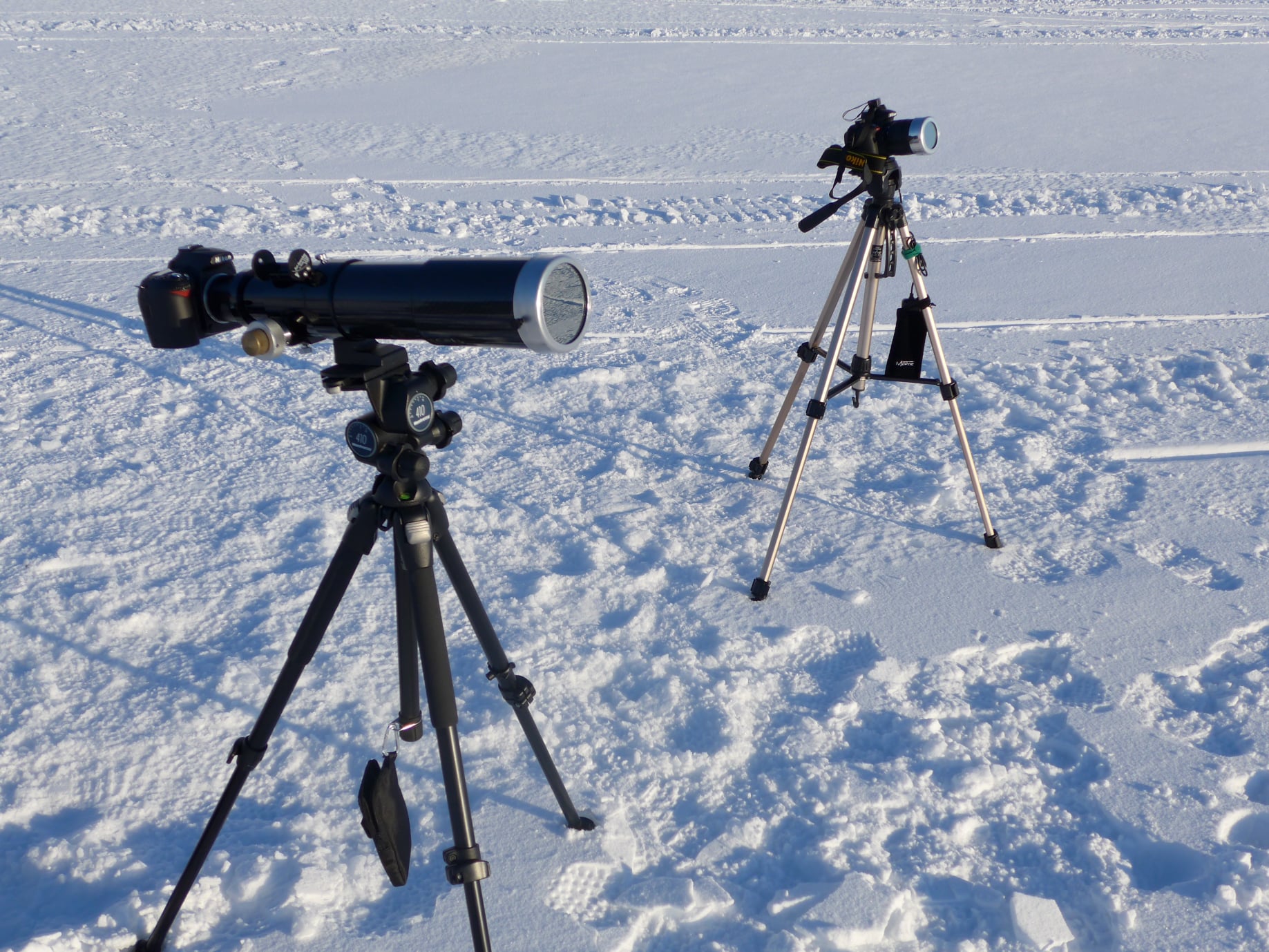This was one of the final improvements and I have been using a very similar setup since 2010. I am satisfied with it. I replaced the 500mm mirror lens with a Stellarvue Raptor 70 ED Raptor Telescope. The Telescope provides 400mm focal length, and very good optics quality. I also replaced my old Sony Videocamera with a newer camcorder.
Since I want to SEE the eclipse and not deal with the cameras all the time, I went for a software that automates the pictures of the eclipse. In this case I used Eclipse Orchestrator running on a laptop which is connected to the Nikon D90. This software automates the complete series of shots taken during all the eclipse.
The complete Hardware used here was the following:
For Main Eclipse pictures and video:
Manfrotto Tripod, Manfrotto 410 head, Astrotrac with Battery Pack, Manfrotto 486 head, Supporting Aluminum Bar, Nikon D90, Sony Camcorder, Stellarvue Raptor 70 ED Raptor Telescope, 12 Volt Battery (PowerGorilla), Laptop
For Multiple shots sequence:
Vivitar Tripod, Nikon D70s with 28-200 lens, Intervalometer
